Inhibiting roles of FOXA2 in liver cancer cell migration and invasion by transcriptionally suppressing microRNA-103a-3p and activating the GREM2/LATS2/YAP axis
- PMID: 34349344
- PMCID: PMC8319255
- DOI: 10.1007/s10616-021-00475-2
Inhibiting roles of FOXA2 in liver cancer cell migration and invasion by transcriptionally suppressing microRNA-103a-3p and activating the GREM2/LATS2/YAP axis
Abstract
Forkhead box A2 (FOXA2) has emerged as a tumor inhibitor in several human malignancies. This work focused on the effect of FOXA2 on liver cancer (LC) cell invasion and migration and the involving molecules. FOXA2 expression in LC tissues and cell lines was determined. The potential target microRNA (miRNA) of FOXA2 was predicted via bioinformatic analysis and validated through a ChIP assay. The mRNA target of miRNA-103a-3p was predicted via bioinformatic analysis and confirmed via a luciferase assay. Altered expression of FOXA2, miR-103a-3p and GREM2 was introduced in cells to identify their roles in LC cell migration and invasion. Consequently, FOXA2 and GREM2 were poorly expressed while miR-103a-3p was highly expressed in LC samples. Overexpression of FOXA2 or GREM2 suppressed migration and invasion of LC cells, while up-regulation of miR-103a-3p led to inverse trends. FOXA2 transcriptionally suppressed miR-103a-3p to increase GREM2 expression. Silencing of GREM2 blocked the effects of FOXA2. GREM2 increased LATS2 activity and YAP phosphorylation and degradation. To conclude, this study demonstrated that FOXA2 suppressed miR-103a-3p transcription to induce GREM2 upregulation, which increased LATS2 activity and YAP phosphorylation to inhibit migration and invasion of LC cells.
Keywords: FOXA2; GREM2; LATS2; Liver cancer; MiR-103a-3p; YAP.
© The Author(s), under exclusive licence to Springer Nature B.V. 2021.
Conflict of interest statement
Conflict of interestThe authors report no conflict of interest.
Figures
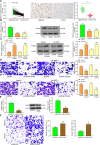
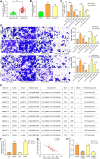
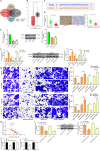
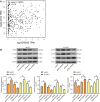
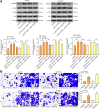

References
LinkOut - more resources
Full Text Sources

